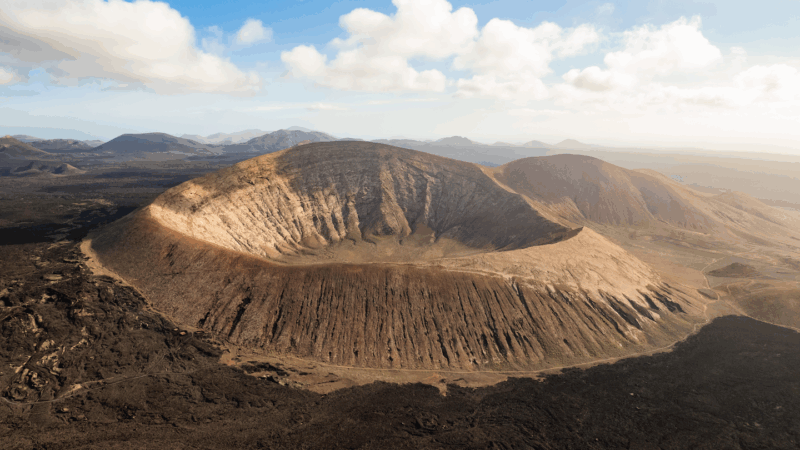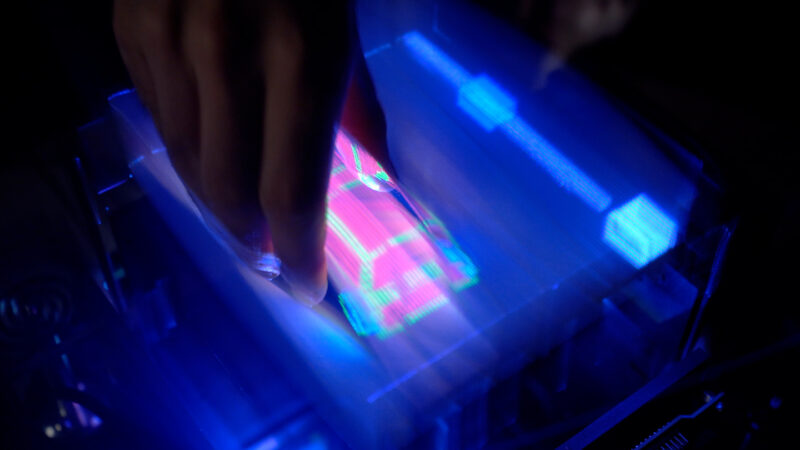A beach day on early Mars would not have been a pleasant getaway.
A new look at the Red Planet has turned up a possible ancient coastline in its northern hemisphere. A second study hints that the mineral giving Mars its current rosy hue likely needed frigid water to form.
“We can imagine an early Mars with abundant liquid water,” says Alberto Fairén. This astrobiologist was not involved in either study. He works at the Center for Astrobiology in Madrid, Spain and at Cornell University in Ithaca, N.Y.
Ancient seas on Mars would have been quite cold, the new research suggests. Fairén says that would make it “similar, in some sense, to the beaches of the Arctic Ocean.”
Ancient coastline unveiled
Mars is thought to have had lots of liquid water more than 3 billion years ago. Its northern lowlands may have even held a vast ocean. This region sits at a lower elevation than the rest of the planet, sort of like a giant bowl.
The Chinese rover Zhurong landed on the edge of this region in 2021. Using radar, it probed the site for signs of a past shoreline.

The rover did find a sloping region some 10 to 35 meters (30 to 115 feet) underground. It spans about 1.3 kilometers (0.8 mile). Its incline also closely matches that of beaches on Earth. Radar data suggest pebble- to sand-sized grains make up their slopes.
Researchers shared the findings February 24. The work appeared in Proceedings of the National Academy of Sciences.
The buried slope likely wasn’t a sandy dune. Its features don’t match the shape of windblown sand dunes elsewhere on Mars. It also doesn’t look like it was carved by rivers or lava flows. Instead, it resembles Earth’s coasts.
These data don’t yet confirm Mars hosted full-sized oceans. But if the area was an ancient shore, it could offer clues about whether this planet once hosted life.
“The interface between water, rock and air is a nice environment … for life to exist,” says Michael Manga of the University of California, Berkeley. A planetary scientist, he took part in the study. “Some of the earliest life on Earth,” he says, formed “in shallow water along shorelines.”
Mars’ iconic red dust
A second study hints at what Mars’ liquid water had been like.
“We basically were asking this long-standing question of why Mars is red,” explains Adam Valantinas. He’s a planetary scientist at Brown University in Providence, R.I.
The planet’s color is thought to arise from rust. “But there are many types,” Valantinas notes. “Each,” he says, “can tell you about the environmental conditions of when the rust formed.”
For years, scientists suspected Mars’ rust was hematite (HEEM-uh-tyte). It contains no water, so this rust would have formed after the planet’s surface lost its liquid water. But there’s a problem: Martian dust doesn’t absorb and reflect light quite the way hematite does. Plus, scientists have found other water-containing minerals on Mars’ surface.
That led Valantinas and his co-workers to question whether hematite was truly behind Mars’ red hue.
In the lab, they measured which wavelengths of light different minerals absorb and reflect. Then they compared these with wavelengths absorbed and reflected by Martian dust. (The second type of data had been collected by spacecraft on or orbiting Mars.)
What best matched Mars’ surface was a mix of ferrihydrite and basalt (Buh-SALT), a type of volcanic rock. These findings appeared February 25 in Nature Communications.
Ferrihydrite is a rust that contains water. It likely would have required cold, wet conditions to form, Valantinas says. On Earth, the mineral is somewhat unstable. It will gradually transform into a more stable form (like hematite). But a cold, acidic environment could slow that morphing. And that could have kept the ferrihydrite on Mars stable until its liquid water vanished.

















